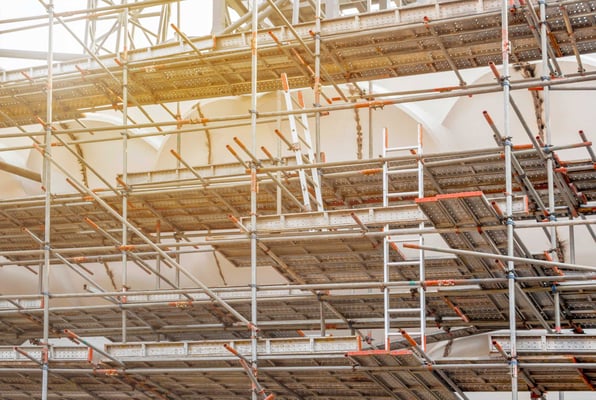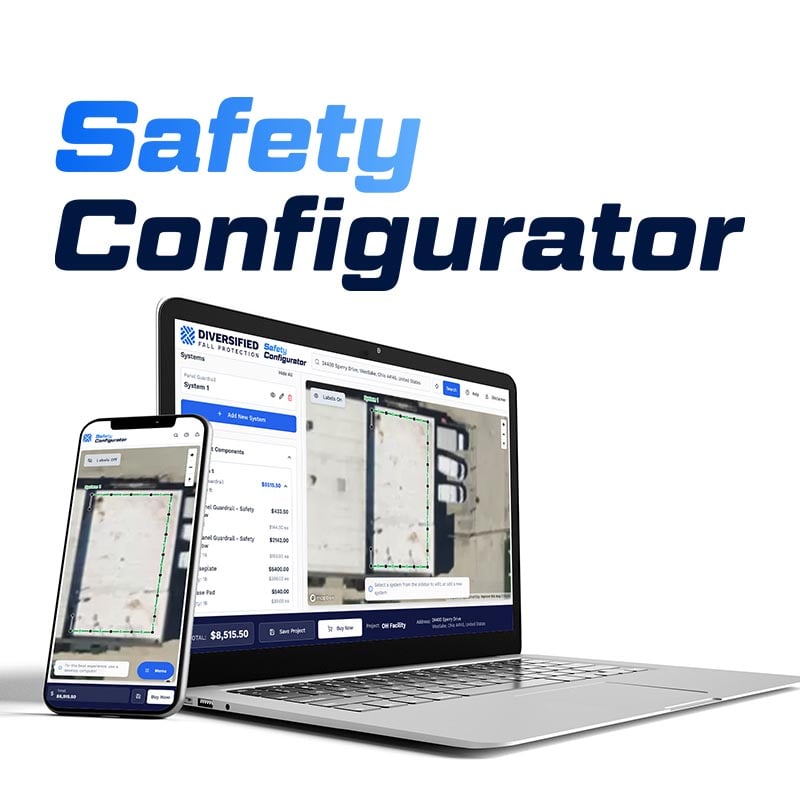
Ladder, Scaffolding Safety are Crucial Elements in Protecting Job Site Workers
Ladders and scaffolding are common pieces of equipment used in many work sites. While these are essential tools for completing tasks, they can also be dangerous if not used properly and safely. Ladder safety and scaffolding safety are crucial elements in ensuring the wellbeing of workers on construction sites. Unfortunately, ladder and scaffolding safety violations are still prevalent, despite efforts by organizations such as OSHA to enforce standards. Related to these are fall protection violations, which, for 12 years running, are #1 on OSHA’s list of most common citations.
OSHA Standards for Ladder Safety: Compliance and Common Violations
OSHA 1926.1053 specifies that all ladders must be designed and built for the purpose [they are] intended to serve, and must be maintained in good condition. The ladder should be inspected prior to use, and any defects must be fixed or the ladder must be removed from service. The ladder must also be the correct type for the job, as not all ladders are suitable for all types of work. To prevent falls, ladders must be securely fastened, and the user should always face the ladder when climbing or descending. A three-point contact should be used when climbing and descending, and the ladder should be placed on a secure, level surface before use.
Common violations of OSHA Standard 1926.1053 include using ladders that are too short for the task, placing ladders on unstable surfaces, and overloading ladders beyond their weight capacity.
OSHA 1926.451 outlines the requirements for scaffold use in construction, including design, construction, and use. Scaffolding safety violations include failure to properly secure scaffolds, lack of fall protection, and failure to provide adequate access and egress.
Financial and Reputational Consequences of Safety Violations
To mitigate the prevalence of ladder and scaffolding safety violations, employers must ensure that their workers are trained on the proper use and maintenance of ladders and scaffolds. Additionally, employers should regularly inspect ladders and scaffolds to ensure that they are in good condition and free of any defects or damage.
The cost of violations can be significant for employers. OSHA fines for safety violations can range from a few hundred dollars to tens of thousands of dollars, depending on the severity of the violation and other factors. In addition to fines, employers may also face lawsuits, compensation claims, and other costs associated with workplace accidents and injuries.
Beyond the financial costs, ladder and scaffolding safety violations can also have a negative impact on a company’s reputation and its ability to secure new business.
Furthermore, and most importantly, workplace accidents can result in serious injuries or even fatalities, which can have a devastating impact on workers and their families. Employers must do everything they can to ensure their employees understand the risk of non-compliance and create buy-in for safety programs on the job site. But what does it mean to be adequately trained and thus accountable to these programs? To aid employers in answering this otherwise vague question, OSHA has established designations such as “authorized,” “competent,” and “qualified” persons in the law. ANSI Z359.2 further articulates the industry consensus standard for training workers of these designations and establishing minimum requirements for a comprehensive managed fall protection program. Over the last several years, the marketplace has responded, and many training programs exist that meet the ANSI standard. Of course, many exist that do not meet the standard, and employers should scrutinize the credentials of any training partner they intend to engage.
While a comprehensive, managed fall protection program may seem cumbersome and costly, the benefits far outweigh the costs if even one fatality is avoided. More than accomplishing compliance and shielding employers from liability, these programs help to create a culture of safety in the workplace that does more than respond to accidents: it prevents them. After all, what good is all the safety equipment in the world if workers aren’t motivated to use it?
Choosing the Right Safety Training Partner: Meeting ANSI Standards
In summary, ladder and scaffolding safety violations are still prevalent on construction sites, and fall protection violations are the most common of all. The cost of safety violations in the construction industry can be significant and far-reaching. Employers should prioritize safety programs to prevent accidents and injuries, and to minimize the potential financial and reputational costs of these violations. Luckily, there are full-service fall protection partners in the marketplace that can demystify safety in construction and give employers expertise and the peace of mind that comes with it.
The standards 1926.1053 and 1926.451 provide specific guidance on ladder and scaffold safety, and employers should familiarize themselves with these standards to prevent violations and maintain a safe work environment. Employers should also familiarize themselves with ANSI Z359.2 and choose a safety training and planning partner whose services meet this standard.
This article was originally published in Workplace Material Handing and Safety on February 16, 2023
Schedule an assessment with Diversified Fall Protection
Contact Us to request a fall safety review

b-1.jpg?width=1368&height=1340&name=Rail%20(175)b-1.jpg)

